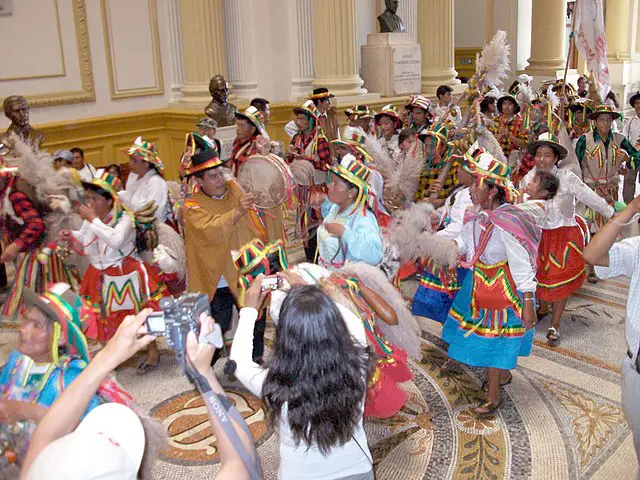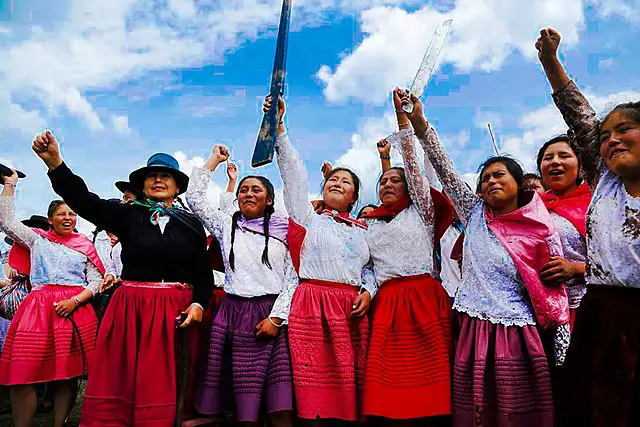It’s Christmas Day. But instead of unwrapping presents or passing around mashed potatoes, you’re squaring up in a dirt ring to punch your neighbor in the face. And the whole town is cheering.
Welcome to Takanakuy, a tradition in the highlands of Peru that’s part therapy, part ritual, part no-holds-barred street fight. Every December 25th, in the region of Chumbivilcas, hundreds of people gather to settle their grudges the old-fashioned way, with fists.
Yes, on the same day millions of people celebrate peace and goodwill, this mountain community laces up their boots, strips off their shirts, and starts swinging.
And somehow… it works!
The Christmas Feud Fight Club
Let’s get one thing straight: Takanakuy isn’t some drunken brawl that got out of hand and turned into tradition. It’s organized. It’s ceremonial. It’s weirdly respectful.
The name comes from the Quechua word for “when the blood is boiling.” And if that doesn’t set the tone, I don’t know what will.
Grudges that have been brewing all year. Land disputes, personal insults, even romantic rivalries are aired out in public. Literally. You can walk up to someone and challenge them to a fight in front of everyone. They accept, a ref steps in, and boom: fight time.
It’s one-on-one. No weapons. No cheap shots. No jumping in from the sidelines. And when it’s over? You shake hands. Grudge buried. Done.
No lawsuits. No family dinners full of passive-aggressive comments. Just a little blood, a couple bruises, and peace for the next 365 days.
Not Just for Macho Men
Here’s the thing that surprises a lot of outsiders: women fight too. So do kids. The whole community is involved. There’s music, costumes, parades, alcohol (obviously), and traditional dance. It’s kind of like if Mardi Gras and a UFC match had a baby and raised it in the Andes.
People dress up in elaborate outfits, masks, and even wear spurred boots that look like something a Victorian cowboy might rock. The costumes are part cultural celebration, part intimidation tactic. And the result is wild, colorful and theatrical, but very, very real.
It’s not just about anger. It’s about catharsis. It’s about not letting resentment rot your insides. In a way, it’s healthier than most of what we do in the West. I mean, have you ever spent a family Christmas smiling through clenched teeth while your cousin brags about crypto?

Why Fistfights Instead of Forgiveness?
It sounds brutal, right? But think about how many people you know who carry resentment for years. Workplace snubs, cheating partners, neighbors who let their dogs crap on your lawn. These things fester.
Takanakuy offers a release valve.
And because it’s structured, not chaotic, it rarely gets out of hand. Fights last a few minutes. Officials are there to keep it clean. The point isn’t to hurt. The point is to end the conflict.
There’s something refreshingly honest about it. No one hides behind screens. No one posts vague Facebook statuses. You want closure? You get in the ring.
A Tradition Born from Rebellion
This isn’t some ancient, frozen-in-time ritual. Takanakuy has roots in resistance. During colonial times, Indigenous communities used it to assert autonomy. Spanish law might’ve ruled the land, but Takanakuy ruled the soul.
Over time, it evolved. Today, it’s a strange mix of Indigenous tradition, Andean pride, and street justice.
And while Peru’s government doesn’t officially endorse punching your neighbor, they mostly let it be. It’s culturally protected. Socially accepted. Kind of sacred, in its own way.
Is Violence Ever… Therapeutic?
This is the uncomfortable part. Violence is generally seen as bad, right? We’re told to talk things out. Use our words. Be the bigger person.
But what if you’re in a place where courts are slow, therapy’s expensive, and people live in tight-knit communities where gossip spreads faster than wildfire? What then?
In Chumbivilcas, they’ve figured out a system that works for them. And maybe that’s the key here: context.
It’s easy to judge when you’re scrolling through an Instagram reel showing two women in Santa hats smacking each other. But when you see the crowd clapping afterward, when you hear the music kick in again, when the fighters hug… something shifts.
It’s not about violence. It’s about release.
And honestly? A world with fewer lawsuits and more consensual showdowns might not be the worst timeline.
Final Round: What Takanakuy Teaches Us
Every culture has its way of dealing with pain, anger, and conflict. Some write poems. Some make passive-aggressive toasts at dinner. And some throw hands in a mountain town to the beat of traditional drums.
Takanakuy isn’t perfect. But it’s human. It’s messy, loud, and raw. Just like the emotions it’s designed to process.
So next time you’re biting your tongue at a family gathering or mentally drafting a “just wanted to say” email to that coworker… maybe take a breath. Maybe imagine shaking it out in a dusty ring with drums playing behind you.
And then maybe, just maybe, you’ll walk away a little lighter.
Even if your nose is bleeding.
Sources:
1. BBC: Christmas Fighting Festival in Peru
2. Vice: Takanakuy, Peru’s Violent Holiday Tradition
3. National Geographic: How Peruvians Punch Out Their Problems at Christmas

